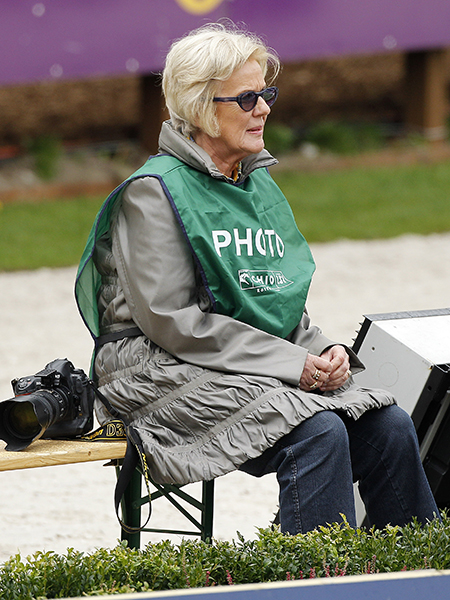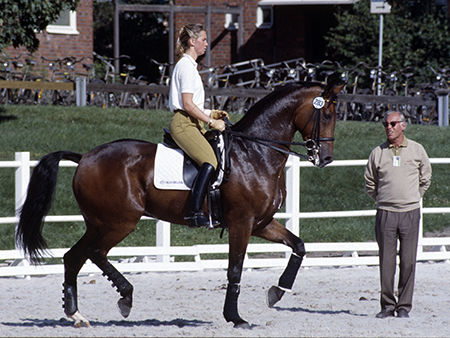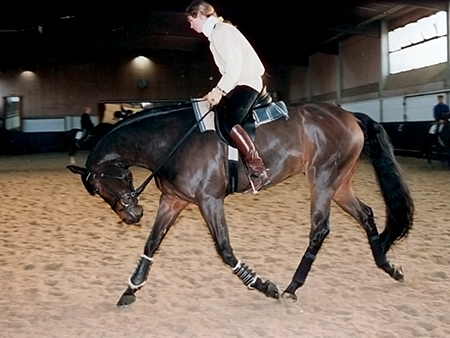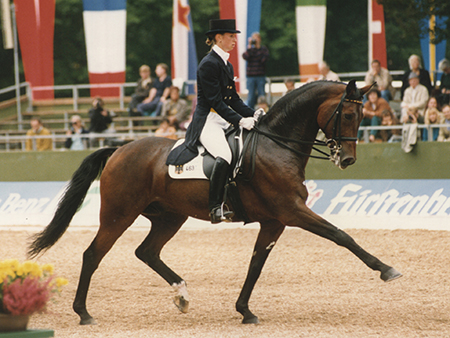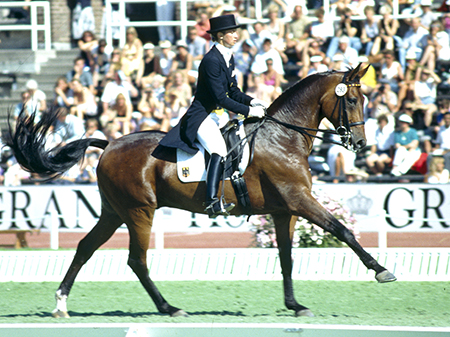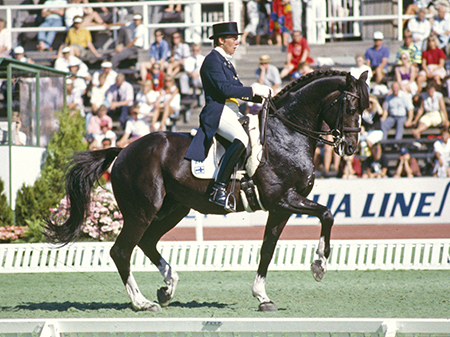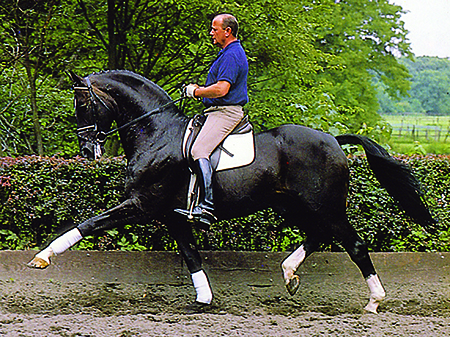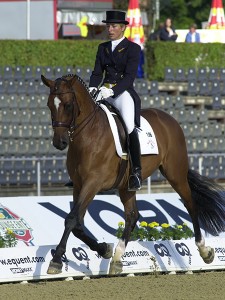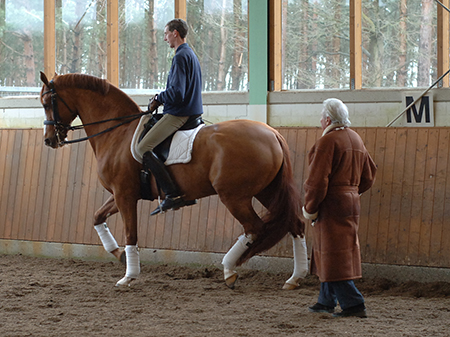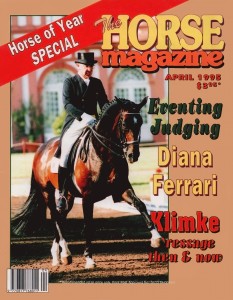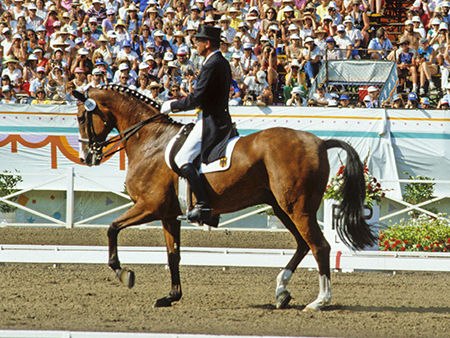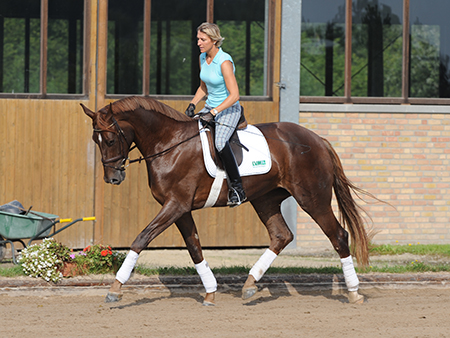The dressage photographer has a privileged position arena-side: right there with the judges – perhaps with a better view at ground level – and the advantage of a lens that lets you see and feel what is going on between horse and rider.
I’ve been photographing the world’s best dressage horses for over 20 years, and right now I feel we are travelling in a good direction, but then again, back when I started looking at top-level competition, there was not a lot to complain about…
A long, long, time ago, in 1990, the first World Equestrian Games were held in Stockholm. The Games were fantastic. The clever Swedes organised, programmed, and conducted them in a way that is yet to be bettered.
Nicole and Remmi working with Harry Boldt at Stockholm
The highlights were Rembrandt, the gazelle, with Nicole Uphoff, and Matador, the bouncing black ball, and Kyra Kyrklund. The new deep-and-low training method had been hot in all the equestrian press and the ‘where have all the classical principles gone debate?’ was, as it still is, hot.
That piaffe, light fresh and easy
Nicole and Remmi, working deep and low at home, nothing violent and the horse looks calm…
But what was different at that time was the lack of what came to be known as the spectacular. Remmy was light and elegant, he danced around the arena, Nicole was invisible. Matador was a power machine and his piaffe was amazing – he bounced from diagonal to diagonal. Watching the two working was so exciting, so beautiful. The deep-and-low work was not a fight, there was no ugly hauling to the chest. I watched both combinations work out the back – yes, access was perfectly free those days.
Nicole Uphoff & Rembrandt
Before the competition started, I remember running down the hill from the main arena to the working arena with an excited group of journalists to see Kyra and Matador doing this outrageous thing. I found it fascinating and the stallion had an amazing looseness combined with his strength. At her recent clinic in Melbourne Kyra remarked that she has never used rollkür in her training, doesn’t know what it really is and sticks to the classic principles she learnt in her years with Herbert Rehbein.
Nicole Uphoff & Rembrandt
On a slightly embarrassing note, as Rembrandt came out of the arena, Nicole dropped the reins to put on her jacket – as she did, Remmi started to piaffe. I was so startled I backed away to record the moment, and fell in a heap at the feet of the World Champions. Everyone politely ignored the incident but I missed the pic.
Kyra Kyrkland & Matador
At the Stockholm Press Conference at the end of the competition, the question was asked of the head of the Ground Jury, the late Wolfgang Niggli, why hadn’t the young German star, Sven Rothenberger, and his new expensive purchase, the Jo Hinnemann-trained Ideaal, scored better. The answer, ‘because he showed irregularity at times’.
Herbert Rehbein and Pik Bube
So what are we aiming for?
Article 401 from the FEI dressage rule book states:
By virtue of a lively impulsion and suppleness of the joints, free from the paralysing effects of resistance, the horse obeys willingly and without hesitation and responds to the various aids calmly and with precision, displaying a natural and harmonious balance both physically and mentally.
Ingrid Klimke and Nector
Monica Theodorescu and Ganimedes were magnificent. The horse was described to us by Monica’s father as a ‘big black panther’ and his work was smooth as silk, a perfect example of the classical training of the Theodorescu family. Over the years it was a privilege to watch them train at home. Georg told us many lovely stories, stories of a true horseman in every way.
George Theodorescu teaching at home
One of the highlights of our visits was to see Georg working with a Grand Prix level pupil, the Russian rider Alexandra Korelova, who with Balagur, a Russian ex-Police horse, finished sixth at Hong Kong. When helping the rider establish piaffe rhythm, Georg assisted by walking after the horse with a dressage whip. He told Chris and I that a steward told him he could not walk behind the horse with a whip in his hand at a competition. Not a problem said Georg, and took out the pocket handkerchief that he always had in the top pocket of his jacket, and used that as his metronome.
Great to see Monica take over as the German dressage coach in 2012.
Dr Klimke and Biotop at Wiesbaden, the horse had been unrideable when Dr Klimke took him on
We were never lucky enough to see Dr Klimke and Ahlerich compete, luckily there is still video footage to be had that shows a clean athletic style of dressage. We were lucky enough to see him with Biotop.
Dr Klimke & Ahlerich
Again we were so fortunate that Dr Klimke was always generous with his time, answered our questions and contributed so much for us to pass on through the magazine. The equestrian world is fortunate that his wisdom is passed on through his daughter Ingrid.



